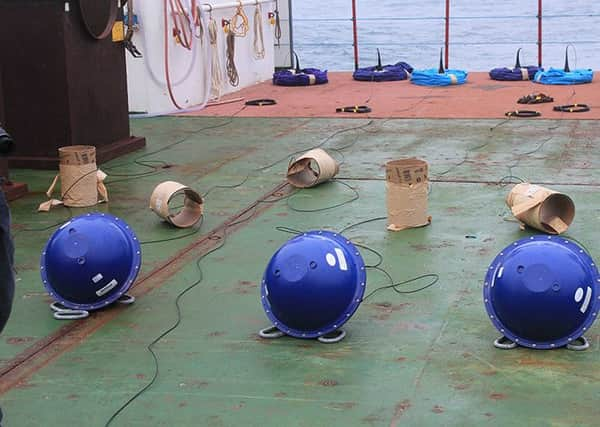Floating GPS warns mussel farmers about harmful algal


Scientists at the Scottish Association for Marine Science (SAMS) in Oban are helping to safeguard stocks of farmed shellfish and salmon in Scottish aquaculture’s industrial heartland.
The waters around Shetland produce around 77 per cent of the rope-grown mussels in Scotland and the seafood sector on the islands is worth around £350 million per year, meaning the Shetlands are crucial to Scottish Government targets of sustainably producing 210,000 tonnes of fish and 13,000 tonnes of shellfish by 2020.
Advertisement
Hide AdAdvertisement
Hide AdBut these stocks can be threatened by masses of harmful algae that can form off the coastline, known as Harmful Algal Blooms (HABs) – one bloom in July 2013 led to a voluntary ban on harvesting from all 20 mussel sites on Shetland.


Toxins from some of these algae are absorbed by shellfish, posing a risk to human health, and others can kill farmed fish.
Human health is protected by regulatory monitoring that leads to fishfarms or shellfisheries being closed if toxin levels rise.
To help improve this monitoring, SAMS scientists, in conjunction with Marine Scotland, have deployed 16 floating ‘drifters’ in the waters to the north of Scotland to track ocean currents, which along with data from satellite images, will help them anticipate when some of these HABs could occur.
The collected data will then be used to validate a model that will more accurately predict the emergence of blooms.
It will complement a HAB monitoring service currently funded by the Natural Environment Research Council (NERC) and Biotechnology and Biological Research Sciences Council (BBRSC).
This will give fish and shellfish growers a reliable early warning system to the emergence of HABs, allowing them to take mitigating actions.
Professor Keith Davidson, SAMS’ principal investigator in Microbial Ecology and Modelling, said: “The security of Shetland’s aquaculture industry is key to ensuring products are safe to eat and to the success and reputation of both Scotland and the wider UK seafood market.
Advertisement
Hide AdAdvertisement
Hide Ad“Science can help build robust early-warning systems that can help reduce the risk of HABs affecting farmed products. The more work we can do in this area, the better prepared we will be.”
A drifter is a floating GPS, anchored to the water so that it can track currents, rather than being blown by the wind. They transmit their location via satellite every hour.
Eight of the 16 drifters have sails to anchor them to the surface metre or so, and 8 have a wire tether and a sea anchor at 15m depth, to follow subsurface currents.
That lets investigators see how the more wind-driven surface layer moves compare to deeper water.
Plymouth Marine Laboratory and Exeter University are conducting remote sensing as part of this project and the drifters will be released from the Marine Scotland Science vessel, Scotia.
The Shetland-based North Atlantic Fisheries College (NAFC) Marine Centre is also contributing to inshore oceanography.